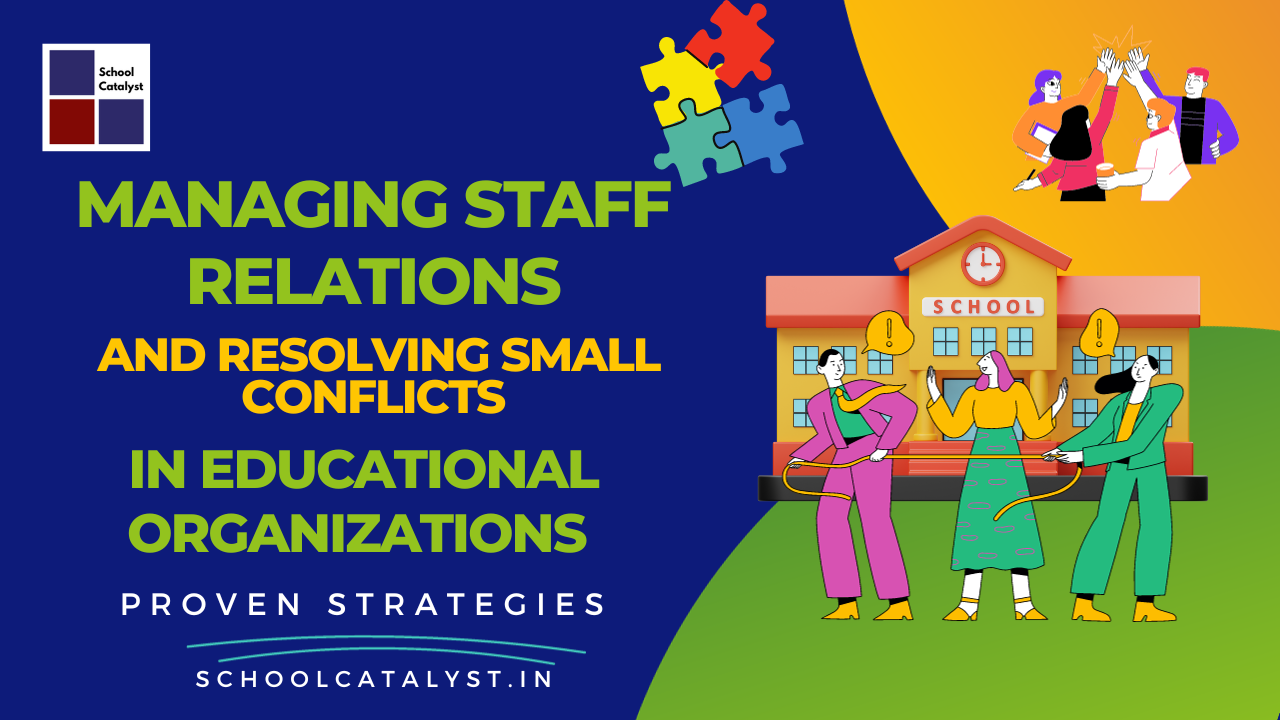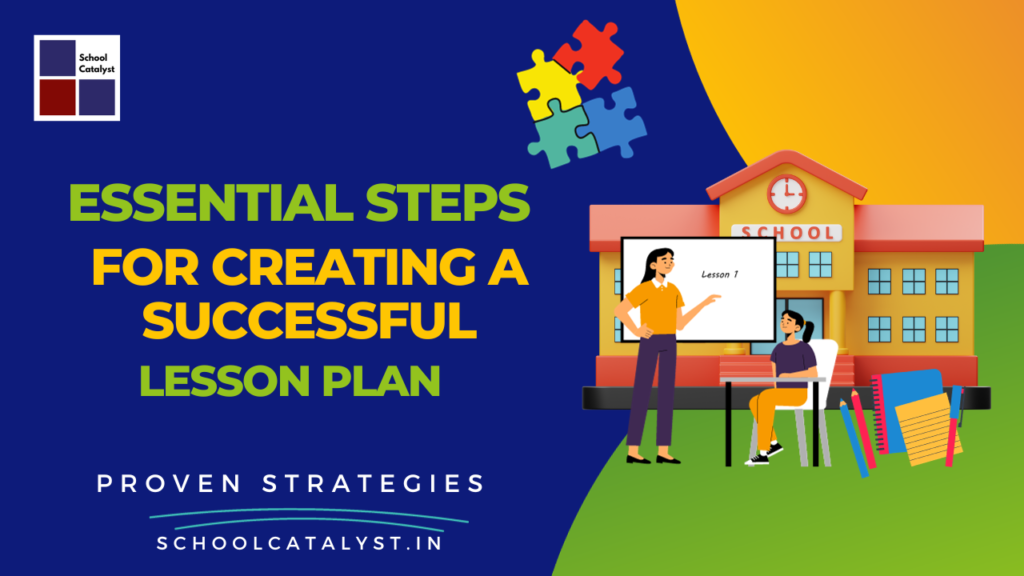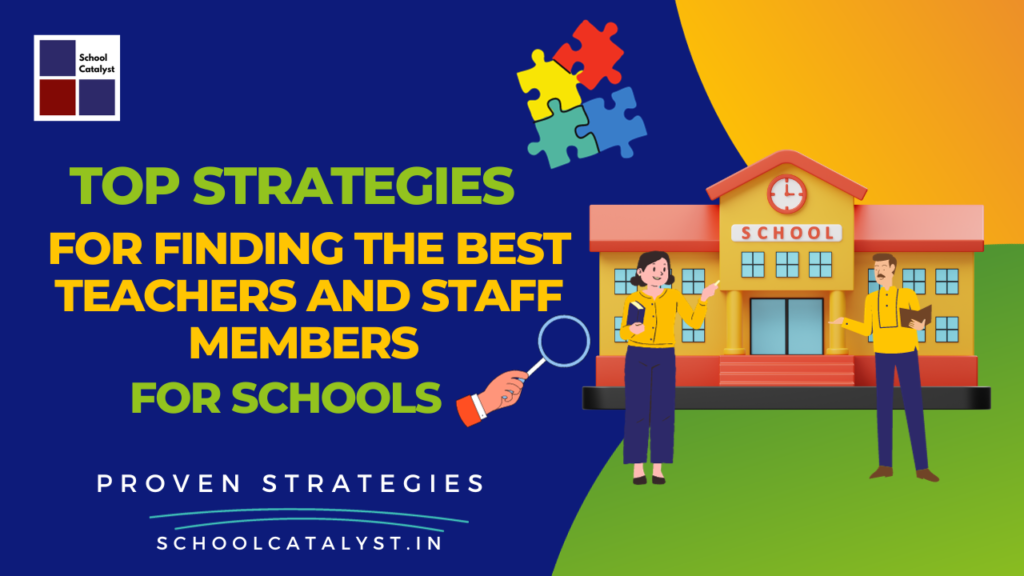Harmony in Education: Managing Staff Relations and Resolving Small Conflicts

Introduction:
Educational institutions, whether they are schools or colleges, are bustling hubs of activity. In these dynamic environments, it’s not uncommon for staff conflicts and challenges in staff relations to arise from time to time. However, maintaining a harmonious atmosphere is crucial for the well-being of students and the overall success of the institution.
In this blog post, we will delve into effective strategies for managing staff relations and addressing small problems between staff members. By fostering healthy relationships and open communication, educational institutions can create a positive work environment that benefits both staff and students.
Section 1: Promote Open Communication
1.1 Regular Staff Meetings
Encourage regular staff meetings where teachers and administrators can openly discuss concerns, share ideas, and collaborate on problem-solving. These meetings serve as platforms for team members to voice their opinions and stay informed about important matters.
1.2 Constructive Feedback
Promote a culture of constructive feedback. Ensure that feedback is specific, actionable, and focused on improvement rather than blame. Constructive criticism helps staff members grow professionally and fosters an atmosphere of continuous improvement.
Section 2: Conflict Resolution
2.1 Conflict Mediation
Designate a staff member or administrator as a mediator to help resolve conflicts impartially. Mediation can facilitate communication and compromise between conflicting parties. It’s essential to have a neutral third party who can guide discussions towards a resolution.
2.2 Establish Conflict Resolution Procedures
Create clear and fair conflict resolution procedures that staff members can follow when they encounter disagreements. Ensure that these procedures are known to all employees. Having well-defined steps can prevent small conflicts from escalating into bigger issues.
Section 3: Team Building
3.1 Team Building Activities
Organize team-building activities to foster stronger bonds among staff members. These activities can help improve collaboration and mutual understanding. Simple outings, team challenges, or workshops can be effective in building a sense of camaraderie.
3.2 Celebrate Achievements
Recognize and celebrate staff achievements, both big and small. Acknowledging hard work and success can boost staff morale and create a positive atmosphere. Encourage a culture of appreciation and gratitude.
Section 4: Interactions with Other Institutions
4.1 Collaborative Projects
Encourage collaboration with other schools or educational institutions. Joint projects can create a sense of community and shared goals among staff members. Collaborations can lead to shared knowledge and innovative solutions.
4.2 Information Sharing
Establish a system for sharing information and resources with neighboring schools or institutions. This can help address common challenges and find solutions together. Sharing best practices and experiences can be mutually beneficial.
Section 5: Training and Professional Development
5.1 Conflict Resolution Workshops
Offer conflict resolution workshops to staff members to equip them with the skills needed to manage conflicts effectively. These workshops can provide practical tools and strategies for resolving issues.
5.2 Professional Development
Support ongoing professional development to help staff members continuously improve their skills and knowledge. Providing opportunities for growth can boost staff satisfaction and performance.
Section 6: Employee Assistance Programs (EAPs)
6.1 Offer EAPs
Consider offering Employee Assistance Programs to provide counseling and support services to staff members dealing with personal or professional challenges. EAPs can be a valuable resource for those in need.
Conclusion:
Managing staff relations and resolving conflicts within educational institutions is essential for creating a positive and productive work environment. By implementing these strategies, schools and colleges can promote open communication, foster teamwork, and address issues promptly. Remember, a harmonious staff contributes to a positive and successful learning experience for all. For personalized guidance and consutancy you can contact our tem with the contact details proved in the Contact Us page.




